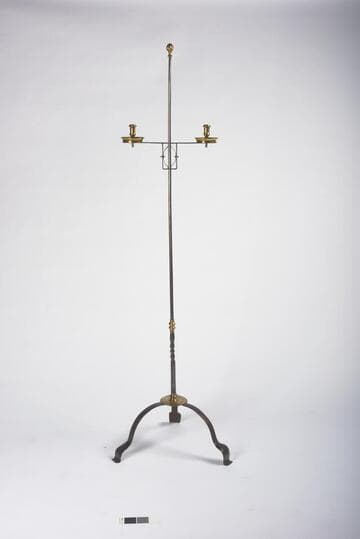Decorative arts
Desk
1 of 26
Introduced to America about 1720, the form of desk known today as a “fall-front” or “slant-lid” desk evolved from a combination of a chest of drawers and a portable writing box with a sloping lid. Containing numerous drawers of various sizes and cleverly concealed storage compartments, it was the 18th-century equivalent of a workstation and lockable safe. Typically, the hinged front lid dropped down to form a writing surface supported by horizontal lopers that slid out from either side. In the interior of this desk, the central prospect, decorated with an ornately carved shell, is flanked on either side by colonnettes that conceal storage compartments and a series of pigeonholes and drawers. Desks like this were used primarily by men conducting business affairs in the home. According to the documentation accompanying this piece, the desk was purchased in 1781 by Robert Endicott (1756–1819), whose ancestor John Endicott (1588–1665) was governor of the Massachusetts Bay Colony. The documentation—a note from Robert Endicott’s son William—states that it was purchased about the time his parents were married on November 1, 1781, and that they paid “nine hundred dollars (in Continental money)” for the brasses alone. The desk was passed down through generations of the Endicott family.





